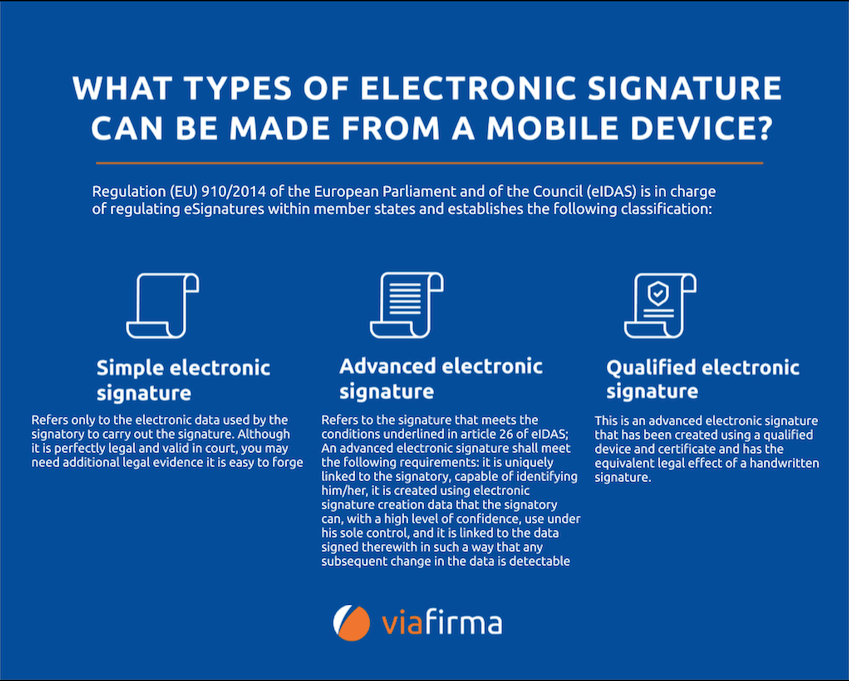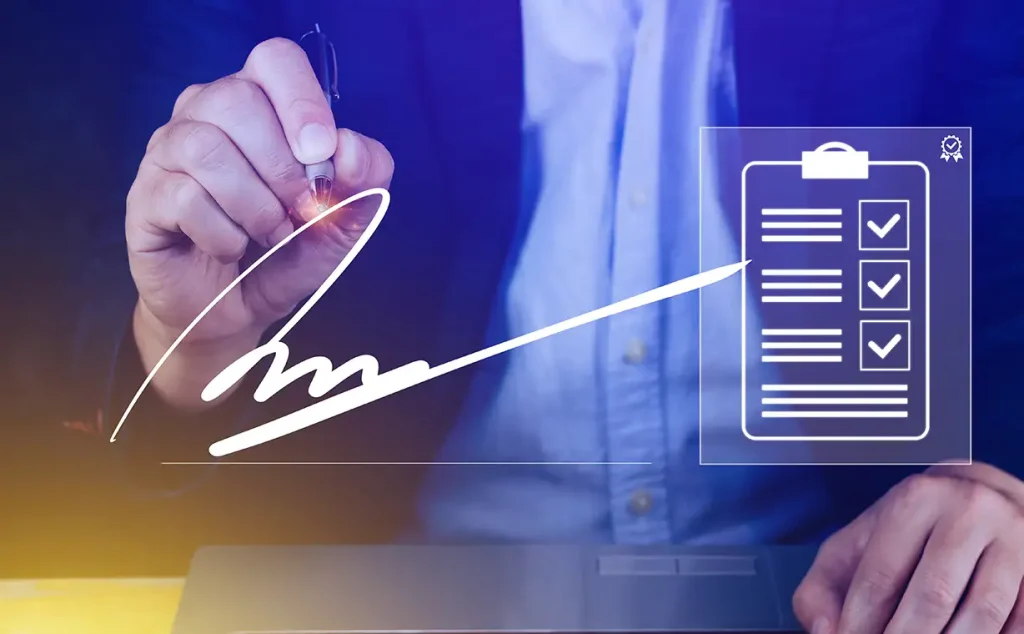Mobile electronic signatures are used by top companies to send, approve and sign documents anywhere. However, not all eSignatures are the same.
Here are the main types and the legal aspects of eSigning at EU level.
What are mobile electronic signatures?
A mobile electronic signature is the electronic equivalent of the traditional wet signature which enables the person to sign via his/her mobile phone at any time.
Signing documents shouldn’t be restricted to the office. Apps should reach beyond devices and operating systems to allow users to close contracts on the go. They allow you to sign on a mobile device, such as a smartphone or tablet, as well as on your computer.
Many organizations have been looking for mobile e-signature solutions to electronically close agreements that hold up in a court of law. They offer remote signing on-the-go, that is, parties do not need to be on-site to reach an agreement and can do this anywhere, anytime, on any device. This saves them time and money.
On the other hand, there are different options for eSigning directly from cell phones, as there are some aspects to take into account for using them correctly.
Main types
Let’s now take a deep dive into the different types of eSignatures for cellphones:
- SMS OTP signature: it’s a fast, secure and legal way to sign a document online through a short code sent to the signer’s cellphone
- Certificate-based signing: A signature stored on a mobile device and used for signing documents. These include all necessary data to uniquely identify the signer.
- Biometric signature. A handwritten signature drawn on tablets or pads using a stylus pen capable of collecting a wealth of biometric data.
- Cloud signature. The best option for mobile eSignatures. Certificates are stored on a secure server (HSM) and are accessible from any device at any time.
Our cloud signature Viafirma Fortress stores certificates on a secure server enabling users access to perform operations on any device
Legal framework
Within the EU, Regulation (EU) nº910 / 2014 of the European Parliament and of the Council (eIDAS) is in charge of controlling eSignatures within member countries and defines them as follows:
- Simple electronic signature: Refers only to the electronic data used by the signatory to carry out the signature. Although it is perfectly legal and valid in court, you may need additional legal evidence because it is easy to forge.
- Advanced electronic signature: It is uniquely linked to the signatory, capable of identifying him/her and created using electronic signature creation data that the signatory can, with a high level of confidence, use under his sole control, and it is linked to the data signed therewith in such a way that any subsequent change in the data is detectable.
- Qualified electronic signature: AES generated using a qualified electronic signature creation device and based on a qualified certificate. It enjoys the highest possible level of security and will have a legal effect similar to the handwritten signature.
Note that all of them are legally binding. Depending on the level of security we want for the signing process or document to be signed, we will choose one or the other.
Considering the above terms, let’s see which ones can be used on a mobile device.

Get your contracts signed faster with mobile electronic signature
Contrary to what people may think about electronic signatures, the reality is that their legal effects are equivalent or greater to the ones of handwritten signatures, as the latter can be easily forged.
They are becoming popular due to their ease-of-use. They speed up any process that requires validation , they avoid any cost involved in printing, traveling and sending the documents plus they are supported in most countries of the world
Viafirma adds an extra layer of security to your agreement process
Viafirma software allow users to add legal evidence (ID picture, video, voice message, etc) to your operations, increasing the security level of your agreement process.
Our software is strictly adhered to international standards. It allows to send documents for signature, as well as tracking and monitoring the signing process in real time.
